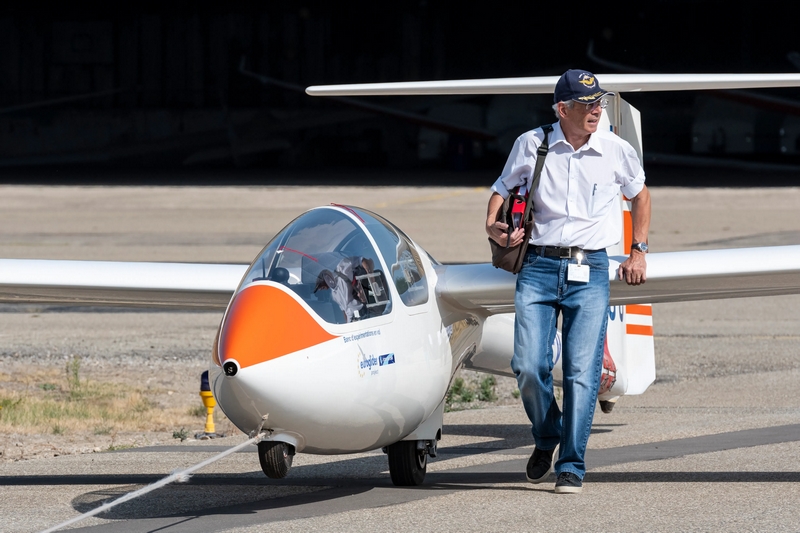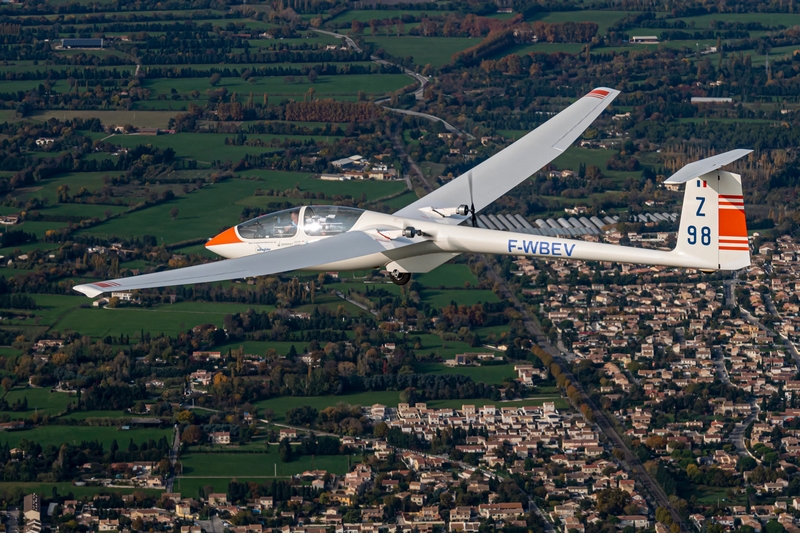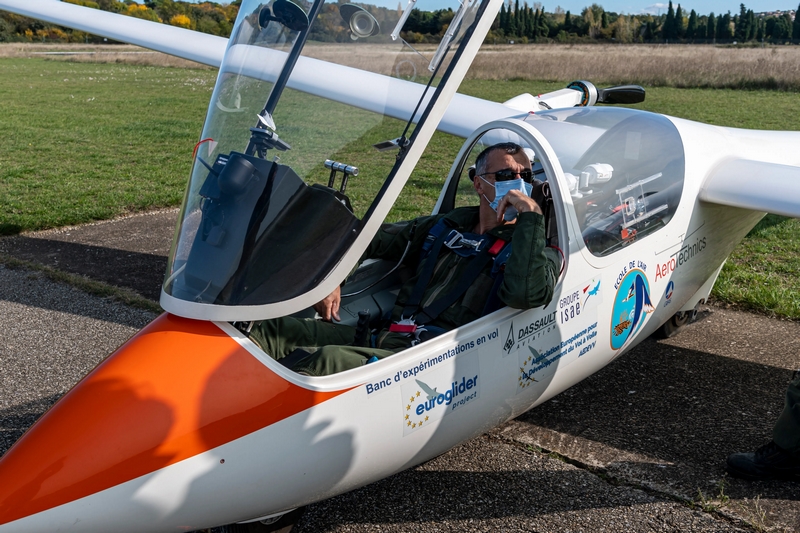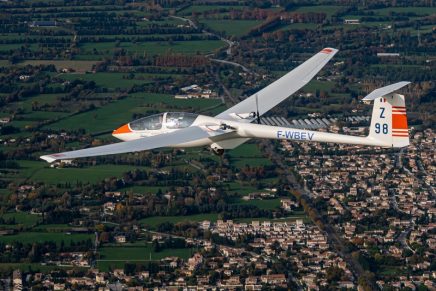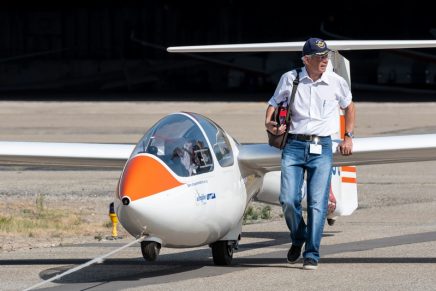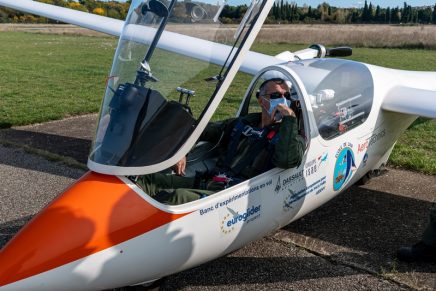The Euroglider Autonomous Electric Glider Project Takes Off.
The ambition of this glider is to be able to carry out complete instructional flights autonomously without having to wait for favorable aerological conditions and while preserving the environment.
The result of an innovative partnership involving the European Association for the Development of Gliding (AEDEVV), Dassault Aviation and the engineering schools of the ISAE Group, the Euroglider project aims to develop an electrically powered two-seater glider for training, release and practice. At the crossroads of several technological challenges, the project is currently in the experimental test phase and will shortly begin preparations for its industrial phase.
The Euroglider project attempts to satisfy the requests of the European gliding training centers. Because of a long waiting period, nearly 2/3 of the new registrants give up before their first “solo” flight. Thanks to its electric propulsion, the Euroglider will be able to link several training flights of more than 40 minutes in an autonomous way and without waiting for favorable conditions. It will therefore allow training organizations to multiply by 3 times their number of school flights over a year while reducing the learning period.
Due to its autonomous take-off, the Euroglider will reduce take-off costs by 60 to 70% compared to the use of a
conventional tug plane.
The Euroglider project is part of the application areas of the Clean Sky 2 program launched by the European Commission, which aims at the industrial implementation of new environmental preservation technologies.
The Euroglider meets several challenges, including energy, design, operational use, and weight.
An energy challenge: to make it possible for an aircraft weighing more than 600 kg to perform a series of 50 minute flight lessons with a series of climbs above 1,300 meters without ascents, using an optimized onboard energy density.
A construction challenge to control weight and wing loading: to design a high-performance EASA-certified aerostructure, while reducing the weight of the airframe compared to equivalent non-powered conventional training gliders, with a compatible and controlled production and acquisition cost.
A challenge in the overall design for operational use: to enable simple and reliable use, reproducing all the characteristics and flight qualities as well as the ergonomics of the usual training gliders for student pilots and instructors; to integrate new innovative and efficient training methods and tools; to facilitate maintenance.

